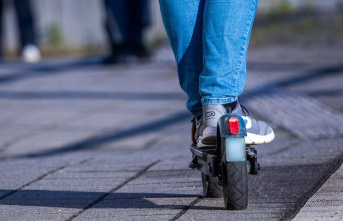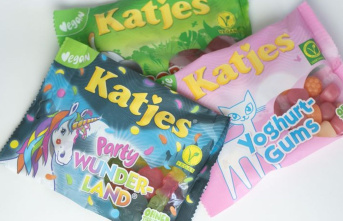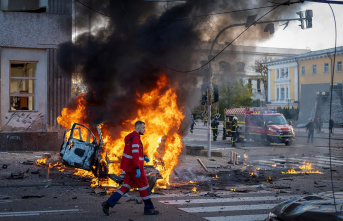La "Isla Bonita", the beautiful island of La Palma in the mild Atlantic climate, has so far been spared from mass tourism. The island is characterized by breathtaking landscapes, untouched nature, hospitable people and a mild climate, even in winter. But the pandemic and the volcanic eruption from September until just before Christmas last year severely depressed visitor numbers.
The eerily beautiful images of red-hot lava flows pouring out towards the sea from the volcano that has since been dubbed Tajogaite were fascinating. But many did not want to get too close to the unleashed forces of nature that destroyed houses, schools, churches and banana plantations.
As part of the reconstruction, the island government is now relying on more vacationers. "Tourism is a very important pillar in the rebirth of La Palma," says the tourism officer of the island government, Raúl Camacho. Concerned islanders warn not to overshoot the mark. The neighboring island of Tenerife, which is within sight, with its big hotels, is a deterrent example for them. Around five million tourists go there every year. "I want curious vacationers who are interested in the island and show respect for their people and nature," says environmental activist and artist Gustavo Diaz.
Just slow recovery
The best year so far for the tourism industry of La Palma was 2017, when around 300,000 guests were counted. After the devastating years of the pandemic and the volcano, the industry is only slowly recovering from the setbacks this year. Northern Europeans come especially when it is dark and cold at home, in winter. While the British make up the largest group of visitors on the larger Canary Islands of Gran Canaria and Tenerife, most visitors to La Palma traditionally come from Germany. In 2019 they made up 40 percent of all holidaymakers there.
The typical holidaymaker on La Palma is not primarily interested in sunbathing on the beach, nightlife or shopping, as a survey by the Canary Islands government shows. La Palma attracts more active vacationers who want to hike in untouched nature with guides to extinct volcanoes, take boat trips to see whales and dolphins or admire the underwater world during diving courses.
The healing spring Fuente Santa in the south of the island is also famous. The natives used it and the Spaniards also became aware of the source at the end of the 15th century. In the centuries that followed, it brought prosperity to the island, because the wealthy traveled from far away to cure themselves of plagues such as syphilis and leprosy. But in 1677 the San Antonio volcano erupted and buried the spring. For 300 years the islanders searched in vain for the "sacred spring", only in 2005 was it located by test drilling. Now a thermal bath is to be built there in order to attract the wealthy from all over the world, as it did centuries ago.
Isn't it too big?
Environmental activist Diaz has his doubts as to whether the Fuente Santa project isn't a bit too big and doesn't take enough account of the landscape and nature. "We are in a race against climate change. We simply use far too much nature, everything is slowly getting dirty and built over," he complains in his small house in Fuencaliente. This can be seen on the island's beaches and rocky coast, which are mostly littered with washed-up plastic.
"It bothers me incredibly. But making a noise or calling for help isn't my thing," says Diaz, looking out over the endless Atlantic from the terrace of his house. Instead of putting his hands on his lap, Diaz keeps organizing clean-up campaigns. He involves the community, park authorities and sponsors, and he calls on volunteers to get involved via his Facebook page "Herrumbre Vivo" (Living Rust). "Recently we collected eleven tons of flotsam, including a lot of plastic waste and driftwood, with 15 volunteers on a beach over three days," he says. Most of the work is hauling the trash up the steep slopes, says Diaz. "Vacationers are also welcome, that would be eco-tourism," he says.
Garbage doesn't just end up in the garbage disposal. From what others throw away, especially scrap metal, Diaz welds and screws together unique sculptures. "For me, this is the ideal answer to the environmental and climate crisis: the reuse of discarded work equipment and rubbish," says Diaz, holding up a bizarrely beautiful fish sculpture, the belly of which was the tank of a moped in a previous life. His works have their very own aesthetics and are always surprising at the same time, because one suddenly recognizes familiar everyday objects in the animal sculptures. It is quite possible that Diaz will attract even more holidaymakers with this combination of environmental protection and art.
Tourism Authority of La Palma Key data on vacationers on La Palma Intertseite "Herrumbre Vivo" of the environmental activist and artist Gustavo Díaz








